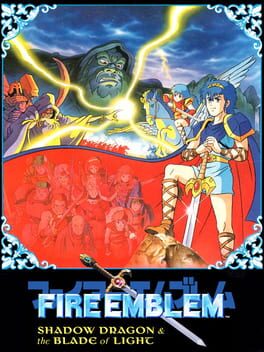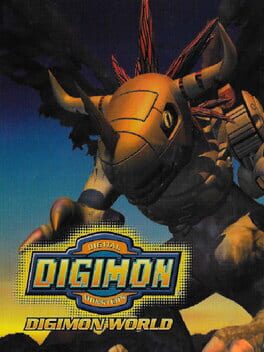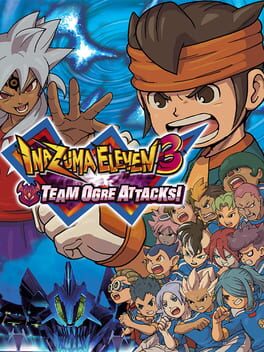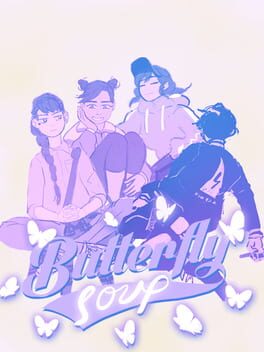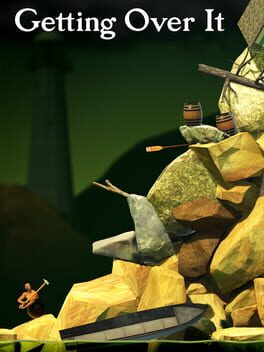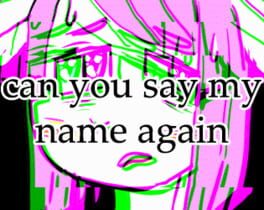rubenmg
1996
A bridge between the abstract action labyrinths of Doom and the future more cohesive places of the genre like Half Life, Duke Nukem 3D just occasionally reaches anything interesting on either side or on their union. With a much less combat focused than usual approach (enemies having 101 shooter design, most interesting situations relying on traps and thus in item usage and environment awareness to get around them) the game leans toward more of a navigational puzzle. Which is not something that different from the pure labyrinth that was Wolfenstein 3D to begin with, with the difference that the Duke is searching for a less gamey sense of place.
At first, the trick doesn’t work that bad since the attention to detail (in decorative interactions particularly) does give the illusion of a more sophisticated approach to what even a level is. However, this same illusion turns on itself when the exploration is forced and, when actively asked to pay attention to the map, the gamey sense is stronger than the most obvious lazy Doom arena, at least those were coherent inside their own logic. The real places start being small, forgettable samples among a greater, not that good navigational chaos.
Moreover, it seems that there is a conflict of wanting to avoid plaguing everything with action, worrying that it would detriment the contemplative approach to understand the level on a logical level, when a year later Blood would demonstrate that taking more cohesive, less abstract places as inspiration while maintaining the usual level of adrenaline everywhere resulted, even though similar to a theme park, in an unmistakably felt sense of a cohesive place.
At first, the trick doesn’t work that bad since the attention to detail (in decorative interactions particularly) does give the illusion of a more sophisticated approach to what even a level is. However, this same illusion turns on itself when the exploration is forced and, when actively asked to pay attention to the map, the gamey sense is stronger than the most obvious lazy Doom arena, at least those were coherent inside their own logic. The real places start being small, forgettable samples among a greater, not that good navigational chaos.
Moreover, it seems that there is a conflict of wanting to avoid plaguing everything with action, worrying that it would detriment the contemplative approach to understand the level on a logical level, when a year later Blood would demonstrate that taking more cohesive, less abstract places as inspiration while maintaining the usual level of adrenaline everywhere resulted, even though similar to a theme park, in an unmistakably felt sense of a cohesive place.
It certainly resembles a lot to chess since, in its own terms, it’s a game majorly about positioning. Sure, there is resource management and a bit of random number trickery, but most of the strategy will revolve around who is where to counter what. Though this could be said of most tile-based strategy games, and the comparison wouldn’t be untrue, something like (ironman) XCOM (forgive my limited knowledge in strategy yet) falls a bit further when the enemy units, or the terrain, are unknown upon arrival, the base management could be its own independent game and it explicitly wants you to take into account, and use, probability percentages. XCOM asks you to take risks and to take all the consequences, no turning back.
Since competing against an AI on equal grounds isn't the most exciting approach to a chess-like game (especially at this era) Fire Emblem looks more like a chess problem. A small hint to this is that the final ranking in further entries is decided taking into account your number of turns. So Fire Emblem ends up having a lot of a puzzle game too.
If everything goes well, a map in Fire Emblem will be completed in one smooth try. But maps are usually designed so that everything goes wrong. The board then turns into a full puzzle where to calculate what the enemy can do when and how to counterattack. Of course, there are some random numbers, mainly affecting criticals and dodges, but those are small things in the greater picture, a reason to restart the level again in the worst case and a small appreciated advantage in the best. Strategizing a map ends up being a planning exercise of eradicating dangers and exploiting weaknesses.
Some problems arise when seeing the game like this. It's not fully transparent like chess since there can be, and usually are, a few hidden surprises on the map and a lot more attention needs to be put to every enemy unit since each is unique unlike the six chess pieces existent. But these secrets end up losing the surprise factor on repetition, eventually becoming just another predictable piece of the board, and errors due to a lack of proper attention end up being resettable. Unlike chess, there are a lot of units to move each turn, and in consequence turns drag on and on with too many uninteresting decisions to repeat in every try.
It could be well questioned that this is not the way to play Fire Emblem at all, except for hardcore fans who seek a good score, that the first try should be about continuing however you can, imagining your own ironman mode because autosaving in every turn was not that possible in the system and keeping only the temporal save would be troublesome in such a long game, in case some outside factor would power off the console. However, that, to my knowledge, not a single Fire Emblem or Shouzou Kaga game has completely erased this saving system makes me think that it is more of a fundamental design element. Furthermore, the conclusive evidence lies in this very first game itself. Finishing a map asks you if you want to save since maybe you are not always sure that you can continue for long just by finishing the map in any state (and maybe, in a lot of cases, you can go on, but what's always sure is that you can retry to optimize the result, resources are too scarce to give them up so easily). And, what would Marth role be? Would he still be the warrior that leads an army by actively taking arms in every battle like any of his soldiers, or would he be the subject of an escort mission where his single death could mean losing dozens of hours of progress?
I see a very thought out strategy game in here, but, ultimately, I see that it's indecisive, it wants you to examine, to try out, but also to surprise you, to clearly punish for your mistakes, and I don't think it finds harmony and rhythm in its proposal. And my biggest fear is that the failure is so fundamental that no Shouzou Kaga or Fire Emblem game can really do anything about it. I'll have to see.
Since competing against an AI on equal grounds isn't the most exciting approach to a chess-like game (especially at this era) Fire Emblem looks more like a chess problem. A small hint to this is that the final ranking in further entries is decided taking into account your number of turns. So Fire Emblem ends up having a lot of a puzzle game too.
If everything goes well, a map in Fire Emblem will be completed in one smooth try. But maps are usually designed so that everything goes wrong. The board then turns into a full puzzle where to calculate what the enemy can do when and how to counterattack. Of course, there are some random numbers, mainly affecting criticals and dodges, but those are small things in the greater picture, a reason to restart the level again in the worst case and a small appreciated advantage in the best. Strategizing a map ends up being a planning exercise of eradicating dangers and exploiting weaknesses.
Some problems arise when seeing the game like this. It's not fully transparent like chess since there can be, and usually are, a few hidden surprises on the map and a lot more attention needs to be put to every enemy unit since each is unique unlike the six chess pieces existent. But these secrets end up losing the surprise factor on repetition, eventually becoming just another predictable piece of the board, and errors due to a lack of proper attention end up being resettable. Unlike chess, there are a lot of units to move each turn, and in consequence turns drag on and on with too many uninteresting decisions to repeat in every try.
It could be well questioned that this is not the way to play Fire Emblem at all, except for hardcore fans who seek a good score, that the first try should be about continuing however you can, imagining your own ironman mode because autosaving in every turn was not that possible in the system and keeping only the temporal save would be troublesome in such a long game, in case some outside factor would power off the console. However, that, to my knowledge, not a single Fire Emblem or Shouzou Kaga game has completely erased this saving system makes me think that it is more of a fundamental design element. Furthermore, the conclusive evidence lies in this very first game itself. Finishing a map asks you if you want to save since maybe you are not always sure that you can continue for long just by finishing the map in any state (and maybe, in a lot of cases, you can go on, but what's always sure is that you can retry to optimize the result, resources are too scarce to give them up so easily). And, what would Marth role be? Would he still be the warrior that leads an army by actively taking arms in every battle like any of his soldiers, or would he be the subject of an escort mission where his single death could mean losing dozens of hours of progress?
I see a very thought out strategy game in here, but, ultimately, I see that it's indecisive, it wants you to examine, to try out, but also to surprise you, to clearly punish for your mistakes, and I don't think it finds harmony and rhythm in its proposal. And my biggest fear is that the failure is so fundamental that no Shouzou Kaga or Fire Emblem game can really do anything about it. I'll have to see.
1999
As much as I find the world fun to explore, the journey is limited by locks in the form of combats, and the key to unlock them is a Digimon partner trained to be powerful enough. I’m not fond of the high percentage of recruitments to the village that are done through fighting, though I can accept the bit of nonsense of “punch me to make me enter into sense”, the combat where you only take a supporting sideline in a beetle-like match is interesting enough for me to accept the premise. The process to get there however is not that good.
As obscure as the result (not to mistake with the process) of the Digimon raising system wants to be, it still carries too much from a tamagotchi raising the stats origin to its detriment. Each life is a methodical visit to the gym and near optional combats against dummy enemies, do not mistake these samey creatures with the unique Digimon that are allowed to be convinced back into the city, with occasional pauses to cover life necessities devoid of the biggest unexpected surprises that will really forge a bond between partners. The experiences that will stand out can and do arise if you go out on adventure knowing little to nothing, aka what most players will do instinctively on a first try, but this wears off forcibly after a few hours because, as much as you want to push it, the combat locks with high enough numbers will ask you to take a sedentary routine until you figure out, and put to practice, how to get bigger enough numbers.
You basically have two options. First, you play the lottery by keeping the playthrough blind, hoping that you reach the evolution requirements. As a last resort, you look into a guide out of despair, staring into abyss upon finding out that the requirements are not only arbitrary, but quite often contradict the “great trainer” nature, although not as much as the partner nature considering how mistreating or spoiling a Digimon is just another valid way to evolve them. Again, it’s a matter of raising the right numbers, without caring that they represent unhappiness, lack of discipline, caring mistakes or overfeeding/lack of proper feed in order to reach a desired unnatural weight. Either way, the result is that a few hours long light adventure transforms into a few dozen hours long hitting the train button simulator and a few illogical steps more if you peeked at the system behind.
For a game where a kid is brought on to reunite and revive a lost island with his juvenile innocent spirit, the progression forces you a bit too much to take a conservative and cold process towards treating your partner and your way to get through the problems of the world.
As obscure as the result (not to mistake with the process) of the Digimon raising system wants to be, it still carries too much from a tamagotchi raising the stats origin to its detriment. Each life is a methodical visit to the gym and near optional combats against dummy enemies, do not mistake these samey creatures with the unique Digimon that are allowed to be convinced back into the city, with occasional pauses to cover life necessities devoid of the biggest unexpected surprises that will really forge a bond between partners. The experiences that will stand out can and do arise if you go out on adventure knowing little to nothing, aka what most players will do instinctively on a first try, but this wears off forcibly after a few hours because, as much as you want to push it, the combat locks with high enough numbers will ask you to take a sedentary routine until you figure out, and put to practice, how to get bigger enough numbers.
You basically have two options. First, you play the lottery by keeping the playthrough blind, hoping that you reach the evolution requirements. As a last resort, you look into a guide out of despair, staring into abyss upon finding out that the requirements are not only arbitrary, but quite often contradict the “great trainer” nature, although not as much as the partner nature considering how mistreating or spoiling a Digimon is just another valid way to evolve them. Again, it’s a matter of raising the right numbers, without caring that they represent unhappiness, lack of discipline, caring mistakes or overfeeding/lack of proper feed in order to reach a desired unnatural weight. Either way, the result is that a few hours long light adventure transforms into a few dozen hours long hitting the train button simulator and a few illogical steps more if you peeked at the system behind.
For a game where a kid is brought on to reunite and revive a lost island with his juvenile innocent spirit, the progression forces you a bit too much to take a conservative and cold process towards treating your partner and your way to get through the problems of the world.
2016
I don’t know if it’s the rich school, the American (or Canadian, whatever) setting, or what, but I keep reading these teenagers being written like how do you do fellow kids all the time. It wants to speak about the complexities of communication dynamics in (today's) adolescence without getting a real adolescent feel. To illustrate, the surreal encounters where the text is conveyed through emojis is kind of clever in that it manages to use ambiguous yet somewhat common language to speak and yet it also seems a bit like this would be Twin Peaks if it was made for zoomers.
I played Hennessy’s two previous games too and while I think there is some honest interest to look back into the problems rooted in adolescence, it probably would be better to translate all that into the (almost) adult world where there isn’t that disconnection between what you think the new generation is like and the teenage drama that has been carried further from school into the modern world. Or you can use adolescence as a medium, just focus on what actually troubles you instead of trying to care about the not problems that may or may not be there. It’s time to accept that the transition to adult life in this day and age takes a while longer than it used to, for better or worse, and start working from there.
I played Hennessy’s two previous games too and while I think there is some honest interest to look back into the problems rooted in adolescence, it probably would be better to translate all that into the (almost) adult world where there isn’t that disconnection between what you think the new generation is like and the teenage drama that has been carried further from school into the modern world. Or you can use adolescence as a medium, just focus on what actually troubles you instead of trying to care about the not problems that may or may not be there. It’s time to accept that the transition to adult life in this day and age takes a while longer than it used to, for better or worse, and start working from there.
In the first half of the game or so it's pretty clear that you are playing one of the best puzzle games ever created by being clearly presented with a fully transparent physical logic that will never play no cheap magic tricks and do what a lot, or all, puzzle games always seek and never reach, keep showing level after level defying your conception of what can even be done with very simple rules every single time.
Now, earlier for some, later for others, you're going to get stuck. That's fine. About that time, the game clearly reveals itself as a masterpiece.
It’s at those times that the background elements will come to the foreground. While standing still with a total lack of ideas, searching for anything to hold onto, you’ll start appreciating the colors of the day and night cycle, the flower leaves rising with your steps, the ever present synth that rarely makes a full melody, the fire crackling, the waves threatening your sausages... You’ll even give it a rest, go take a walk, go live. And you’ll return without expecting it. The map is static, you know the exact consequence of an action before the movement, with the game closed too. So you’ll go to sleep and replace the sheep to count with the level that’s been there for days, already burnt into you. Take advantage of the lack of logic to build the possibilities back.
I guess there is something about frustration and wisdom (or knowledge) here, but it’s related to a particular greater topic: inspiration. And the patience it needs. You cannot invoke it by stomping against the same wall again and again in the same way. You can only clear your head, give it time, distance and hope that when inspiration comes you will be ready to welcome it properly.
Keep dreaming those sausages.
Now, earlier for some, later for others, you're going to get stuck. That's fine. About that time, the game clearly reveals itself as a masterpiece.
It’s at those times that the background elements will come to the foreground. While standing still with a total lack of ideas, searching for anything to hold onto, you’ll start appreciating the colors of the day and night cycle, the flower leaves rising with your steps, the ever present synth that rarely makes a full melody, the fire crackling, the waves threatening your sausages... You’ll even give it a rest, go take a walk, go live. And you’ll return without expecting it. The map is static, you know the exact consequence of an action before the movement, with the game closed too. So you’ll go to sleep and replace the sheep to count with the level that’s been there for days, already burnt into you. Take advantage of the lack of logic to build the possibilities back.
I guess there is something about frustration and wisdom (or knowledge) here, but it’s related to a particular greater topic: inspiration. And the patience it needs. You cannot invoke it by stomping against the same wall again and again in the same way. You can only clear your head, give it time, distance and hope that when inspiration comes you will be ready to welcome it properly.
Keep dreaming those sausages.
2015
Obviously (and thankfully?) the game doesn’t care, but it’s curious to see the loop where you build up a relationship with a girl, pleasing her in any way you can until you bang her and then basically ignore for the rest of the game because there’s nothing else to it. There’s something in that empty view on a relationship when it’s entirely based on sex as an objective that leaves you a weird “I guess that’s it” feeling again and again. Another morning on the bed with nothing to talk about, another new girl to chase, because and in spite of knowing how it’s going to end.
Anyway, for the things that someone really cared about, the infinitely contextually stupid date match minigame, the dehumanized conversational interplay to get upgrades and the perfectly defined personality of each girl create a not that obviously connected flow that works mostly because the individual parts are great but only recurrent when in cycle. I mean, the (fun) dialogues run out too quickly, but you need to keep talking to get better at the minigame, which is quite good and surprisingly thought out, but nothing that would be done more than 50 times if it wasn’t because it allows you to keep talking with the girls. It’s a destructive cycle of lust that you can recognize and deny or recognize, play along, and have fun with its farce. And then, in one of the best (probably unconscious) decisions, get eternally stuck with nothing to do, without even an ending to say goodbye. You got everything you wanted, you tasted all the honey, now what? Who cares.
https://www.youtube.com/watch?v=F_7BVaDIAbA
Anyway, for the things that someone really cared about, the infinitely contextually stupid date match minigame, the dehumanized conversational interplay to get upgrades and the perfectly defined personality of each girl create a not that obviously connected flow that works mostly because the individual parts are great but only recurrent when in cycle. I mean, the (fun) dialogues run out too quickly, but you need to keep talking to get better at the minigame, which is quite good and surprisingly thought out, but nothing that would be done more than 50 times if it wasn’t because it allows you to keep talking with the girls. It’s a destructive cycle of lust that you can recognize and deny or recognize, play along, and have fun with its farce. And then, in one of the best (probably unconscious) decisions, get eternally stuck with nothing to do, without even an ending to say goodbye. You got everything you wanted, you tasted all the honey, now what? Who cares.
https://www.youtube.com/watch?v=F_7BVaDIAbA
2022
Butterfly Soup became a symbol upon its ending and the popularity/status it gained along the following 5 years. If the first one was about a fantasy created within a group of friends so strong that it was capable of ignoring the surrounding noise, Butterfly Soup 2 is the reality faced after the magical days of uncertainty materialized. Now the conflicts permeate even those reunions with the friends that not long ago could block the entire world. Fantastic and real exchange roles.
It’s actually interesting to use a direct sequel to question the fantastical symbolic status already settled and work some of the not so happy parts that come after it. And it’s not that the kids suddenly are obstructed by the world that confronts them, it's that the conflicts are inside them. It’s not that Diya’s mother doesn’t understand her or that Noelle’s parents force her to study Chinese, it’s that Diya wants to be capable of talking with her mother and Noelle wants to connect with her roots for reasons she didn’t notice before.
It’s a process of understanding that finding the place where you can finally form your true self also means that you won’t fit all molds, even the ones you desire. It’s learning to live with those contradictions and begin working your way through them. In the end, these kids will grow up and will always be themselves, but they’ll still have to face their inner worries on their way. The group stops being just a place to forget about the world and matures into a space where to deal with their inner conflicts in company.
It’s actually interesting to use a direct sequel to question the fantastical symbolic status already settled and work some of the not so happy parts that come after it. And it’s not that the kids suddenly are obstructed by the world that confronts them, it's that the conflicts are inside them. It’s not that Diya’s mother doesn’t understand her or that Noelle’s parents force her to study Chinese, it’s that Diya wants to be capable of talking with her mother and Noelle wants to connect with her roots for reasons she didn’t notice before.
It’s a process of understanding that finding the place where you can finally form your true self also means that you won’t fit all molds, even the ones you desire. It’s learning to live with those contradictions and begin working your way through them. In the end, these kids will grow up and will always be themselves, but they’ll still have to face their inner worries on their way. The group stops being just a place to forget about the world and matures into a space where to deal with their inner conflicts in company.
What happened to the charm? Why get rid of the good characters in the final farewell tour if the new ones just get a lame backstory and then take an infinite backseat? The first game had its clear problems with giving everyone a share of the scenario, but the second seemed to get it right by always making sure that the dynamics between characters kept everything together.
Even more wasteful is the idea of the world cup that looks like no one really wanted to work towards. The small regional areas and stories in Inazuma 2 conveyed a stronger sense of a unique place than any of the barely cartoonish (which does not mean charismatic) fake (both in a literal and perceived sense) recreations of each country, that is when they finally decide to “go to other countries” halfway through the game.
Everything just shows that they were tired of this. Axel wants to retire yet again for the same reason as the previous two games, Ray Dark reappears doing the same exact thing as always, Jude has the same trauma, the same mafia plot twist is the cause of everything in the shadows. At some point they say look, let’s say that the grandfather was alive, that way we can kill the myth and the series. And I don’t know about GO games yet, but that ending really looks like a desperate goodbye, hoping that it inspired any fan to do anything else if that meant that they could put this to rest for good.
Even more wasteful is the idea of the world cup that looks like no one really wanted to work towards. The small regional areas and stories in Inazuma 2 conveyed a stronger sense of a unique place than any of the barely cartoonish (which does not mean charismatic) fake (both in a literal and perceived sense) recreations of each country, that is when they finally decide to “go to other countries” halfway through the game.
Everything just shows that they were tired of this. Axel wants to retire yet again for the same reason as the previous two games, Ray Dark reappears doing the same exact thing as always, Jude has the same trauma, the same mafia plot twist is the cause of everything in the shadows. At some point they say look, let’s say that the grandfather was alive, that way we can kill the myth and the series. And I don’t know about GO games yet, but that ending really looks like a desperate goodbye, hoping that it inspired any fan to do anything else if that meant that they could put this to rest for good.
The best parts are when the main character feels bad for just going out because her mother has been waiting all night. Being a really small thing, it nails that the guilt is not so much on how the mother really feels, but on the girl’s perceptions on how she always thought she ought to be (as expected, it turns out that it is not that much of a deal, although the game is also too bland presenting the conflict of views and needs between mother and daughter).
Getting that out of the way, the game lacks passion. The same passion that makes the girl want to change her life to be who she really is, that makes her fall in love, that makes her take risks. I even activated the “erotic” scenes out of curiosity (because I’m a pervert) and I’m pretty sure I can easily find Teletubbies clips with more blood in their veins than any sexual encounter here, let alone any kiss or any hug. And this is not only my complaint about the relationship not working but about the exploration of oneself necessities and desires not working, about the state (and problems) of living in Hong Kong in 1986 being whatever and at the end getting out with a bland, supposedly liberating, romance that is too shy to say anything out loud as much as it wants to.
Getting that out of the way, the game lacks passion. The same passion that makes the girl want to change her life to be who she really is, that makes her fall in love, that makes her take risks. I even activated the “erotic” scenes out of curiosity (because I’m a pervert) and I’m pretty sure I can easily find Teletubbies clips with more blood in their veins than any sexual encounter here, let alone any kiss or any hug. And this is not only my complaint about the relationship not working but about the exploration of oneself necessities and desires not working, about the state (and problems) of living in Hong Kong in 1986 being whatever and at the end getting out with a bland, supposedly liberating, romance that is too shy to say anything out loud as much as it wants to.
2009
After a rather brief introduction where a simplified, yet very charming (years of Tokimeki experience plus new presentation approaches do wonders), dating sim structured section plays out, the game reveals what is it really about. For once, the confession isn’t the end of the love story, but the beginning.
Which is a very interesting idea. Using the real time approach (because skip mode, apart from being clearly unintended, sucks) the game still has the charm from the introduction in a much more relaxed pace, but something begins to fail. The more you meet your girlfriend, the more you go out on dates, the more you touch her, the more you kiss her, the less you want to do any of that. Which is also even more interesting. It still carries the question, how does love work after that initial burst, after insecurities are dissipated and becomes part of the daily routine? There are many roads to explore, like to examine how the relationship develops into something more mature, or even to witness how the passion gets lost, the need to see each other fades away and becomes a dear memory of the past. But no, LovePlus is not really interested in that. At this point, your Tamagotchi girlfriend will always be at your loyal service, pretending she cares the same as the beginning, waiting eternally frozen at high school for you even long after you forget her. I just wish both sides could move on.
Which is a very interesting idea. Using the real time approach (because skip mode, apart from being clearly unintended, sucks) the game still has the charm from the introduction in a much more relaxed pace, but something begins to fail. The more you meet your girlfriend, the more you go out on dates, the more you touch her, the more you kiss her, the less you want to do any of that. Which is also even more interesting. It still carries the question, how does love work after that initial burst, after insecurities are dissipated and becomes part of the daily routine? There are many roads to explore, like to examine how the relationship develops into something more mature, or even to witness how the passion gets lost, the need to see each other fades away and becomes a dear memory of the past. But no, LovePlus is not really interested in that. At this point, your Tamagotchi girlfriend will always be at your loyal service, pretending she cares the same as the beginning, waiting eternally frozen at high school for you even long after you forget her. I just wish both sides could move on.
2017
It’s nice to see Butterfly Soup high school nostalgic tale not because it’s more or less accurate (who knows) but because it believes in a teenage ideal where being yourself is accepted and received with love. It’s a letter of hope. Even if the world opposes you, even if your parents oppose you, you can find that group of friends that will understand you. The ideal of Butterfly Soup is not one where all hardships around you magically disappear, but one where the rebellious spirit of Min (and everyone else) is worth fighting for. It’s worth fighting for your truth, for what’s right, it’s worth to be dumb and straightforward and to hear your heart. If made up rules don’t fit who you are, jump over them. Your life’s always ahead and being yourself is a risk you should always take.
A platformer that invents itself from its foundation in a stale genre, reaching back to the essence. An essence that understands that everything at its root is about platforms and moving around them, not about enemies, nor levels, nor obstacles, nor lives, nor deaths, not even jumping or running. A game that doesn’t care how you reach the top, it will treat you the same either if you were lucky or you worked hard, that if you fall it will just suggest you go back up. A mountain made to piss you off, but a static platform above all, the same mountain for all, the journey only yours.
Bennett Foddy kept reinventing movement, searching for the opposite of convenience, to understand and explore that rare bodies are capable bodies too, much more interesting than any standard one. In 2017, Getting Over It was released demonstrating that you could learn to climb with a hammer the same as you learnt to walk, then run, then jump, as we already did more than 40 years ago, and all the merits and failures were yours. If you want to capture the frustration of getting used to a new body, you must avoid any standard. In 2018, just 3 months later, Celeste released and insisted, over a search of the most comfortable body to ever be put under control, that you had it hard, but that if you made it to the top, the merit was yours, you overcame yourself. About every year, hundreds of precision platformers demonstrate that there is no friction going that way, that a small touch on what is already over-explored is the opposite of self-discovery. About every year, it becomes more clear that the Getting Over It journey was truly unique and personal, that trying to replicate it already misses the point. It conquered its own top.
Bennett Foddy kept reinventing movement, searching for the opposite of convenience, to understand and explore that rare bodies are capable bodies too, much more interesting than any standard one. In 2017, Getting Over It was released demonstrating that you could learn to climb with a hammer the same as you learnt to walk, then run, then jump, as we already did more than 40 years ago, and all the merits and failures were yours. If you want to capture the frustration of getting used to a new body, you must avoid any standard. In 2018, just 3 months later, Celeste released and insisted, over a search of the most comfortable body to ever be put under control, that you had it hard, but that if you made it to the top, the merit was yours, you overcame yourself. About every year, hundreds of precision platformers demonstrate that there is no friction going that way, that a small touch on what is already over-explored is the opposite of self-discovery. About every year, it becomes more clear that the Getting Over It journey was truly unique and personal, that trying to replicate it already misses the point. It conquered its own top.
2013
I have the feeling that an important ingredient in Hexcells taste is in the familiarity of the base, half minesweeper, half sudoku (some say Picross, but I don't know it first hand). It’s simple to understand because the rules are always simple. The interest escalates quickly by taking advantage of handmade levels where the positioning is carefully considered to the detail, so that you never need to guess while you still need to slowly examine all the hints to advance without failing.
The great understanding of space is as important as the great understanding of rhythm. In just one hour, the game achieves tranquility, which is clearly pointed at in its visual and sound style, through an impeccable complete concentration. When you realize, you've gone through the whole game in a single one-hour session.
This is what Plus fails to understand from the get go. It's not a bad premise to begin from where the original left off, throwing much harder levels early on. But the Plus isn’t only in the difficulty but also in the size and length. What used to be a concentrated session is now a collection of huge, tedious levels where you spend too much time counting, not deducting, and where you keep tabbing out frequently to clear your mind, something unthinkable in the first one. Even worse are the new hints. The hints with question marks may still have some grace depending on their positioning, however the hints that tell you how many blue hexes are there in a range, represented by an area that looks terrible and hard to read often, multiply the already tiring counting by having to count again, now in circles. And that without going into the levels that rely on this new idea essentially.
That infinite Hexcells games can be made was obvious. That a key essence from the first one was to be concise and not needing anything else, not so much it seems.
The great understanding of space is as important as the great understanding of rhythm. In just one hour, the game achieves tranquility, which is clearly pointed at in its visual and sound style, through an impeccable complete concentration. When you realize, you've gone through the whole game in a single one-hour session.
This is what Plus fails to understand from the get go. It's not a bad premise to begin from where the original left off, throwing much harder levels early on. But the Plus isn’t only in the difficulty but also in the size and length. What used to be a concentrated session is now a collection of huge, tedious levels where you spend too much time counting, not deducting, and where you keep tabbing out frequently to clear your mind, something unthinkable in the first one. Even worse are the new hints. The hints with question marks may still have some grace depending on their positioning, however the hints that tell you how many blue hexes are there in a range, represented by an area that looks terrible and hard to read often, multiply the already tiring counting by having to count again, now in circles. And that without going into the levels that rely on this new idea essentially.
That infinite Hexcells games can be made was obvious. That a key essence from the first one was to be concise and not needing anything else, not so much it seems.
Es cuestionable, y con cierta razón, cuál es el aporte real de Igarashi a Castlevania más allá de ideas a alto nivel. Rompo la lanza a favor de que Igarashi sí que mete algo más de mano. Como prueba Circle of the Moon. De los Castlevania Metroidosos que jugué (todos hasta Aria of Sorrow incluido), el único que se interesa en el concepto de darle vueltas al castillo. Donde los de Iga son juegos de convertirte en Goku Super Sayan Dios Ultra Instinto 100% Kaioken hasta que puedas limpiar en tiempo récord cada pantalla del mapa, Circle va remixeando los enemigos de forma que nunca puedes volver atrás por gusto, te vas a encontrar siempre un reto nuevo y a la altura. Incluso todo el asunto RPG de los looteos tiene mucho más peso que conseguir una de las ciento de armas que nunca vas a usar porque tiene peores stats. Porque aquí las mejoras que consigues son nuevas formas de atacar, incluso tienen un simple sistema de combinación que es suficiente para mantenerte probando nuevas tácticas de vez en cuando. Aún con esto, el mejor Castlevania Metroid tampoco consigue que ni la mejor escena de acción supere la sensación de ser un Castlevania clásico muy pasado por agua. De que cuando llegas a un reto que se antepone, la lógica te dice de volver atrás en una aburrida búsqueda de mejoras. Buen intento, lástima que Igarashi no tardó en volver.

